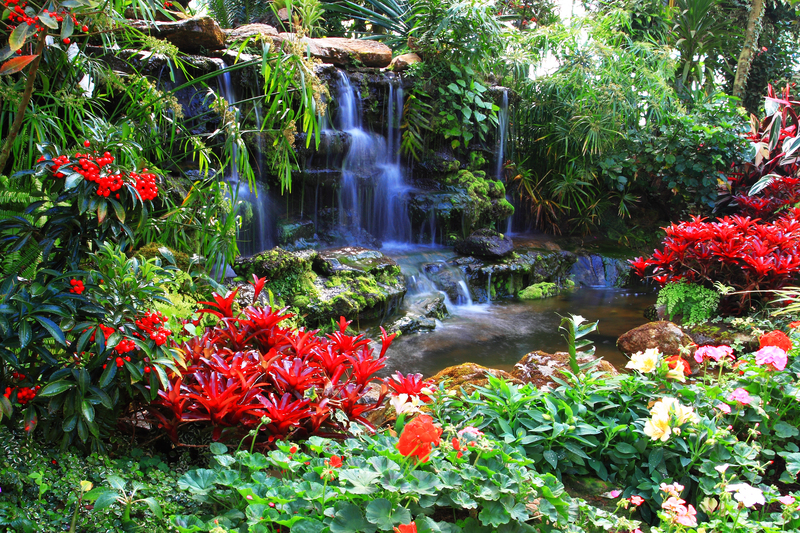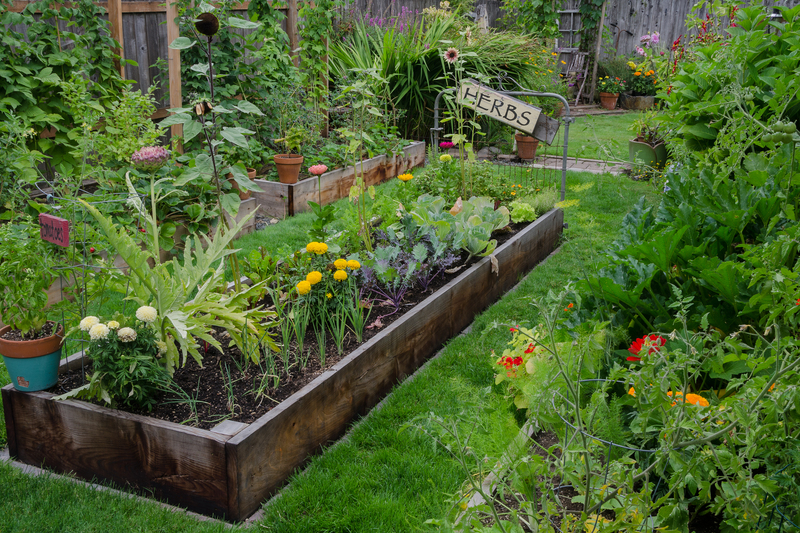How to keep your garden thriving with a canine companion
Posted on 26/06/2025
Gardening is a beloved hobby for many, offering a beautiful and vibrant outdoor escape. At the same time, having a dog brings boundless joy, loyalty, and companionship to your life. However, combining a flourishing garden with a playful pup can seem challenging. The good news is that it's absolutely possible for your garden to thrive even with a canine companion sharing the space. In this comprehensive guide, we'll explore actionable tips and strategies to help you create a harmonious, dog-friendly yard that preserves the health and beauty of your plants.
Understanding the Challenges of Gardening with Dogs
Blending dog ownership with gardening comes with a unique set of challenges:
- Digging: Many dogs love to dig, and your freshly planted flowers or vegetable beds might seem irresistible.
- Urinating: Dog urine can damage lawns and sensitive plants due to its nitrogen content.
- Trampling: A playful pup may run through garden beds, breaking stems or compacting the soil around plants.
- Toxic Plants: Some common garden plants can be harmful to dogs if ingested.
- Mulch & Fertilizer Hazards: Certain mulches and fertilizers are not safe for pets.
Despite these challenges, you can have a vibrant garden and a happy dog. By making a few strategic changes, you'll discover that gardening with dogs can be both rewarding and manageable.

Designing a Dog-Friendly Garden Layout
Create Clearly Defined Paths
Dogs love to patrol their territory, often following set routes through the yard. By observing your dog's favorite walking routes, you can:
- Lay out clear, durable paths using materials like pea gravel, flagstones, or mulch.
- Encourage your dog to use these paths by keeping them wide and easily accessible.
- Plant tough, resilient groundcovers like creeping thyme along the edges to withstand paw traffic.
Define Garden Beds with Barriers
Prevent trampling and digging by using physical barriers:
- Install low picket fences, decorative edging, or even woven willow hurdles around planting beds.
- Try motion-activated sprinklers in trouble spots to safely deter digging.
- Use rocks, logs, or boulders as natural deterrents and decorative features.
Physical barriers signal to your dog where they are allowed to roam, keeping your gardens and lawns healthy.
Provide a Dedicated Digging Area
Channel your dog's digging behavior away from prized flower beds:
- Create a sandpit or digging box in a corner of your yard.
- Bury toys or treats periodically to add interest.
- Praise your pup for using their special area.
This redirection allows your dog to satisfy their instincts without damaging your plants.
Choosing Dog-Safe Plants for a Healthy Garden
To keep your garden thriving and your canine healthy, avoid toxic plants. Some common garden species, such as azaleas, foxglove, sago palm, and lilies, can pose serious health risks to dogs. For a thriving, dog-friendly landscape, consider hardy, non-toxic choices like:
- Sunflowers (Helianthus)
- Marigolds (Tagetes)
- Snapdragons (Antirrhinum)
- Roses (avoiding thorny varieties for younger or bouncy dogs)
- Dog-safe herbs: basil, rosemary, sage, parsley
- Hardy shrubs: Camellias and Viburnum
- Grasses: Blue oat grass, fescues
Always check the ASPCA's list of toxic and non-toxic plants before purchasing new additions for your yard.
Avoiding Poisonous and Hazards Plants
In addition to the plants mentioned above, also avoid:
- Daffodils
- Tulips
- Oleander
- Autumn Crocus
- Castor beans
- Rhododendrons
Keep bulbs and seeds out of reach, and monitor your dog's behavior for unexpected interest in any new plant.
Dog-Proofing Your Garden: Mulch, Fertilizer, and Pest Control
Choose A Dog-Safe Mulch
Mulch keeps soil moisture levels stable, suppresses weeds, and adds polish to planting beds. However, not all mulches are safe for pets. Key tips:
- Avoid cocoa mulch, which is highly toxic to dogs.
- Opt for pine, cedar, or hemlock bark chips as safer alternatives.
- Monitor for ingestion, as even non-toxic mulch can upset a dog's stomach.
Be Careful with Fertilizers and Pesticides
Many fertilizers and pesticides are harmful to pets. To keep your garden safe for dogs:
- Choose organic, pet-friendly products whenever possible.
- Keep your dog indoors when applying lawn care treatments and follow the package's drying times.
- Avoid blood meal, bone meal, and fish-based fertilizers, which can be attractive--and dangerous--if ingested.
- Remove leftover fertilizer or pesticide spills promptly.
Training Your Dog for Safe Garden Behavior
With time and consistency, you can teach your dog to respect garden boundaries and develop good outdoor manners.
Use Positive Reinforcement
Reward your dog for following the rules:
- Use treats, praise, and play to reinforce staying on paths and avoiding garden beds.
- Interrupt unwanted digging or trampling and redirect your dog gently to their designated area.
Patience and firm boundaries create long-lasting habits and a more respectful canine companion.
Supervised Freedom
In the early stages, don't leave your dog unsupervised in the yard for long periods. Monitor their behavior and intervene when necessary. Over time, your dog will learn which areas are off-limits.
Managing Dog Waste and Lawn Health
Protecting Your Grass from "Burn"
Dog urine, rich in nitrogen, can create unsightly brown spots on your lawn. To keep your lawn thriving with a dog:
- Encourage your dog to urinate in a designated area, ideally mulched or graveled.
- Flush urine spots with water to dilute nitrogen and minimize damage.
- Consider training your dog to use a specific patch for potty breaks.
- Mow your lawn high and fertilize less frequently to increase stress tolerance.
Picking Up After Your Dog
Always clean up solid waste promptly:
Dog waste contains harmful bacteria and can spread parasites. Regular removal keeps your garden healthy for all its inhabitants--human, canine, and plant alike.
Enrichment Ideas: Making Your Garden Fun for Your Dog
A busy and contented dog is far less likely to develop bad habits in the garden. Make your outdoor space as enjoyable as possible:
- Incorporate agility obstacles, like tunnels or jumps, to focus your dog's energy.
- Set up shady zones or a dog house for cooling off.
- Offer interactive toys, treat puzzles, and water features (sprinklers, kiddie pools) for extra fun.
- Plant edible herbs (like parsley or basil) your dog can safely nibble.
Provide Shade and Fresh Water
Your dog needs a cool, sheltered spot to relax, especially during hot weather. Always provide a sturdy water bowl filled with fresh water to prevent dehydration.
Maintenance Tips for a Thriving Garden with Dogs
- Check fences and garden barriers regularly for gaps or damage.
- Replace mulch as needed to avoid mold and rot.
- Inspect plants for signs of trampling or chewing and replant or protect as needed.
- Trim overhanging branches to reduce temptation for tree-climbing breeds.
- Rotate your dog's enrichment toys to prevent boredom.

Frequently Asked Questions about Gardening with Dogs
Q: How do I stop my dog from digging up flower beds?
Create dedicated digging areas, use barriers, reward good behavior, and supervise outdoor time. Consistency and positive reinforcement work wonders!
Q: Which plants are safe for my dog?
Opt for non-toxic flowers, herbs, and shrubs such as sunflowers, marigolds, snapdragons, rosemary, sage, and camellias. Always double-check plant safety with reputable resources.
Q: How do I prevent "dog spots" on my lawn?
Train your dog to use a specific potty spot, water down areas after urination, and maintain healthy grass through fertilization and mowing.
Conclusion: Cultivating Harmony Between Your Garden and Your Canine Companion
With preparation, patience, and mindful design, it's absolutely achievable to keep your garden thriving with a dog by your side. By selecting dog-safe plants, creating clear paths, setting boundaries, and providing plenty of enrichment, you'll cultivate a garden that's both lush and safe for your beloved pet. As a result, you'll enjoy both the beauty of your handiwork and the happy wag of your four-legged companion's tail--a winning combination for any devoted gardener and dog lover.
Ready to embrace the joys of both gardening and pet ownership? Start planning your dog-friendly garden today and reap a flourishing, harmonious backyard oasis for everyone to enjoy!

.jpg)

